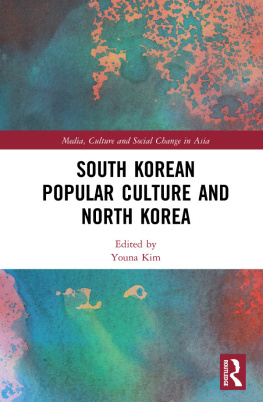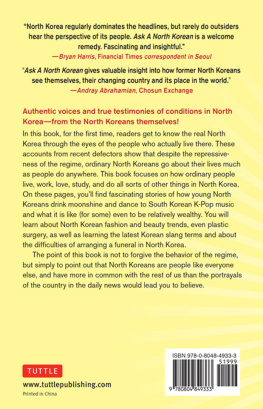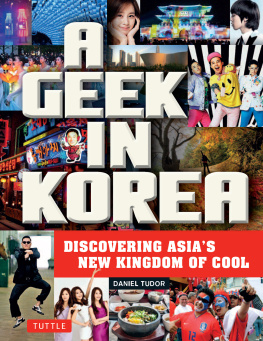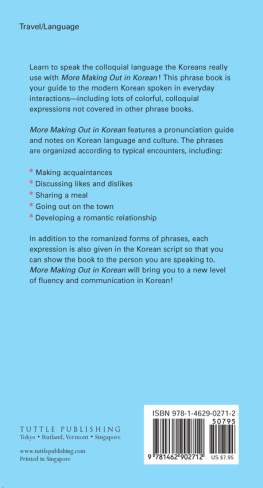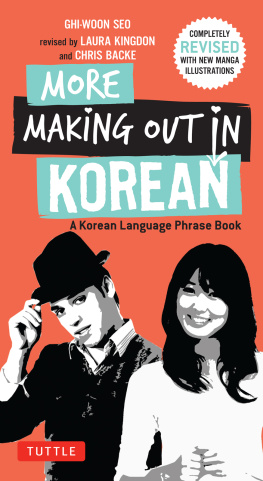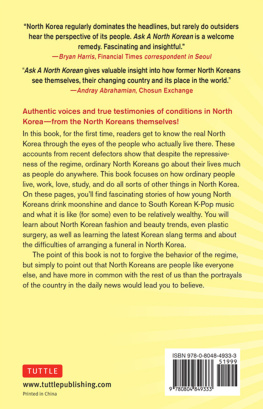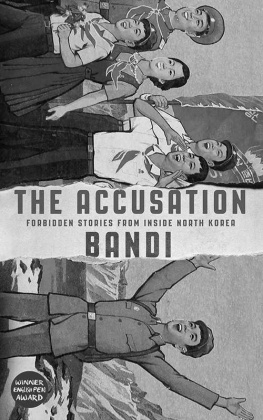Reg Grant - The Korean War
Here you can read online Reg Grant - The Korean War full text of the book (entire story) in english for free. Download pdf and epub, get meaning, cover and reviews about this ebook. year: 2012, publisher: Encyclopaedia Britannica;Britannica Digital Learning, genre: History. Description of the work, (preface) as well as reviews are available. Best literature library LitArk.com created for fans of good reading and offers a wide selection of genres:
Romance novel
Science fiction
Adventure
Detective
Science
History
Home and family
Prose
Art
Politics
Computer
Non-fiction
Religion
Business
Children
Humor
Choose a favorite category and find really read worthwhile books. Enjoy immersion in the world of imagination, feel the emotions of the characters or learn something new for yourself, make an fascinating discovery.

- Book:The Korean War
- Author:
- Publisher:Encyclopaedia Britannica;Britannica Digital Learning
- Genre:
- Year:2012
- Rating:4 / 5
- Favourites:Add to favourites
- Your mark:
- 80
- 1
- 2
- 3
- 4
- 5
The Korean War: summary, description and annotation
We offer to read an annotation, description, summary or preface (depends on what the author of the book "The Korean War" wrote himself). If you haven't found the necessary information about the book — write in the comments, we will try to find it.
The Korean War describes the conflict between communist North Korea and U.S.-supported South Korea for control of the Korean peninsula.
The Korean War — read online for free the complete book (whole text) full work
Below is the text of the book, divided by pages. System saving the place of the last page read, allows you to conveniently read the book "The Korean War" online for free, without having to search again every time where you left off. Put a bookmark, and you can go to the page where you finished reading at any time.
Font size:
Interval:
Bookmark:

E-book published in 2012 by Encyclopdia Britannica, Inc., in association with Arcturus Publishing Limited, 26/27 Bickels Yard, 151153 Bermondsey Street, London SE1 3HA. Britannica, Encyclopdia Britannica, and the Thistle logo are registered trademarks of Encyclopdia Britannica, Inc.
ISBN 978-1-61535-626-3 (e-book)
Please visit our web site at: www.worldalmanaclibrary.com
For a free color catalog describing World Almanac Librarys list of high-quality books
and multimedia programs, call 1-800-848-2928 (USA) or 1-800-387-3178 (Canada).
World Almanac Librarys fax: (414) 3323567.
Library of Congress Cataloging-in-Publication Data
Grant, Reg G.
The Korean War / by Reg Grant,
p. cm.(Atlas of conflicts)
Includes bibliographical references and index.
Contents: From World War to the Cold WarNorth Korea invadesTurning
the tablesChina enters the WarDesperate timesStalemate and negotiation
Consequences of the WarProfilesTime lineStatistics.
1. Korean War, 19501953Juvenile literatureTextbooks. 2. Korean War, 19501953
CampaignsJuvenile literatureTextbooks. 3. Korean War, 19501953CampaignsMaps
for childrenTextbooks. I. Title. II. Series.
DS918.G715 2004
951.9042dc22 2004045526
This North American edition first published in 2005 by
World Almanac Library
330 West Olive Street, Suite 100
Milwaukee, WI 53212 USA
This U.S. edition copyright 2005 by World Almanac Library.
Original edition copyright 2004 by Arcturus Publishing Limited.
Additional end matter copyright 2005 by World Almanac Library.
Produced by Arcturus Publishing Limited.
Series concept: Alex Woolf
Editor: Philip de Ste. Croix
Designer: Simon Burrough
Cartography: The Map Studio
Consultant: Paul Cornish, Imperial War Museum, London
Picture researcher: Thomas Mitchell
World Almanac Library editor: Jim Mezzanotte
World Almanac Library design: Steve Schraenkler
World Almanac Library production: Jessica Morris
All the photographs in this book were supplied by Getty Images and are reproduced here with their permission.
All rights reserved. No part of this publication may be reproduced, stored in a retrieval system,
or transmitted in any form or by any means, electronic, mechanical, photocopying, recording,
or otherwise, without the prior written permission of the copyright holder.
1 2 3 4 5 6 7 8 9 08 07 06 05 04

FROM WORLD WAR TO THE COLD WAR

Japanese forces advance into Manchuria in 1931, setting Japan on the path to World War II.
A t the start of the twentieth century, Korea was a unified, independent kingdom. It had been ruled by the Yi dynasty for over 500 years. Then, in 1910, the country was taken over by its powerful neighbor, Japan. The Japanese ruled Korea as a colony and did their best to wipe out the Korean peoples sense of national identity. In business, government, and higher education, the Japanese language was used. Only a minority of Koreansthose who collaborated with the Japanesebenefited from Japanese rule.
In the 1930s, Japan set out to expand its empire in Asia. In 1931, the Japanese occupied Manchuria, across Koreas northern border, and then moved farther into China, where full-scale war broke out in 1937. Japans expansion brought it into confrontation with the United States, which backed Chinas leader, Chiang Kai-shek. In December 1941, the Japanese went to war with the United States and Britain, launching World War II (19391945) in the Pacific. A series of swift military victories allowed Japan to occupy a large area of Asia, including the Philippines, Malaysia, and Indonesia. But the tide of war soon turned, and by 1945 Japan was facing total defeat at the hands of the United States and other Allied forces.
During World War II, the Allied countries fighting against Germany included the Soviet Union, a communist nation ruled by the dictator Joseph Stalin. Between 1939 and 1941, the Soviet Union had fought a war with Japan on the Soviet border of Manchuria, but the two countries then agreed on a neutrality pact and were not formal enemies for most of World War II. Finally, however, on August 8, 1945two days after the United States dropped the first atom bomb, on the Japanese city of Hiroshimathe Soviet Union declared war on Japan. By the time Japan surrendered, on August 15, 1945, Soviet troops had invaded Manchuria and advanced into the far north of Korea.
In the final days before the Japanese surrender, U.S. officials hurried to devise a plan for the occupation of Korea by the victorious Allies. Military advisers to U.S. president Harry S. Truman drew up a proposal to divide Korea into two zones, with Soviet troops occupying the country north of the 38th parallel and U.S. troops stationed south of that line. Stalin accepted the proposal and Soviet troops, commanded by General Ivan Chistiakov, rapidly spread out through their zone. U.S. troops began to arrive in Korea a few weeks later to occupy the southern region of Korea. This occupation force was commanded by General John R. Hodge.
SOVIET INTEREST
In March 1946, the head of the Soviet delegation to a joint U.S.-Soviet commission on Korean reunification stated:
The Soviet Union has a keen interest in Korea being a true independent country, friendly to the Soviet Union, so that in future it will not become a base for an attack on the Soviet Union.
Quoted in Rethinking the Korean War,
William Stueck

During World War II, Japans empire included most of East and Southeast Asia. Korea was Japans first conquest, having been taken over in 1910.

President Harry S. Truman (center) holds up the document signed by the Japanese when they surrendered to the Allies in 1945.

Korean students welcome U.S. troops arriving to occupy the south of their country in the fall of 1945.
Before World War II ended, the Soviet Union and the United States had agreed that Korea would not be ready for self-rule after the Japanese were removed. The United States proposed that Korea spend a period of time under foreign leadership before being granted full independence. Most Koreans, however, expected their country to regain its independence immediately after the Japanese defeat. When U.S. troops began to arrive in Korea, some political groups in Seoul, the Korean capital, had already declared an independent Korean Peoples Republic. Throughout the country, Koreans had established peoples committees to provide some form of government at the local level. But the United States and the Soviet Union had no intention of letting the Koreans sort out their own future. The two occupation zones came under the military rule of the two foreign powers, with the Soviet Union in the north and the United States in the south.
Next pageFont size:
Interval:
Bookmark:
Similar books «The Korean War»
Look at similar books to The Korean War. We have selected literature similar in name and meaning in the hope of providing readers with more options to find new, interesting, not yet read works.
Discussion, reviews of the book The Korean War and just readers' own opinions. Leave your comments, write what you think about the work, its meaning or the main characters. Specify what exactly you liked and what you didn't like, and why you think so.



